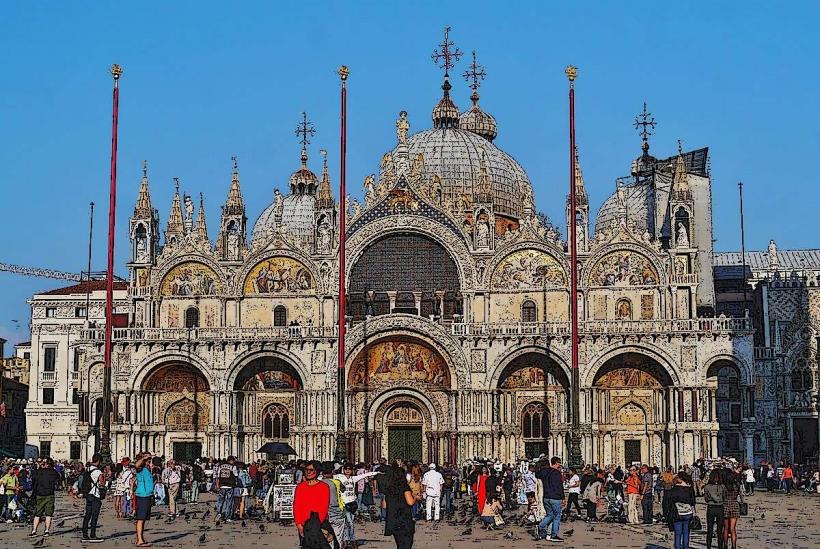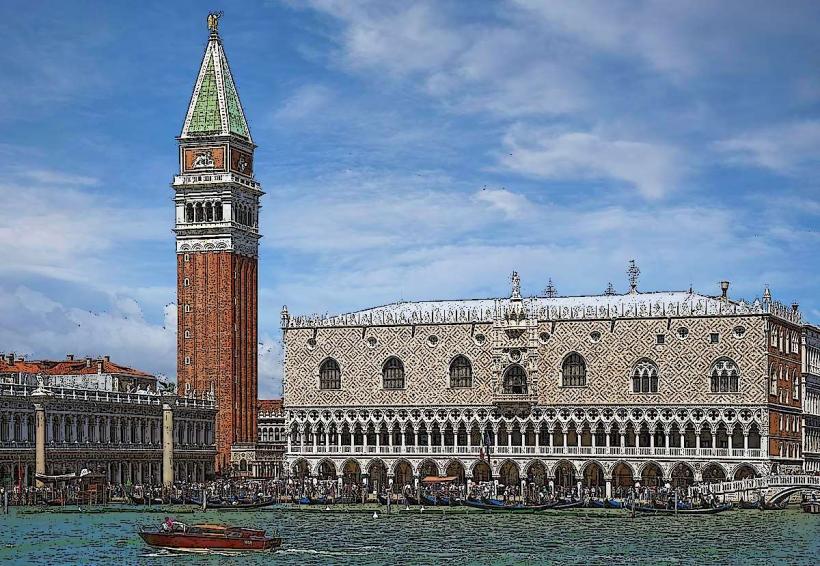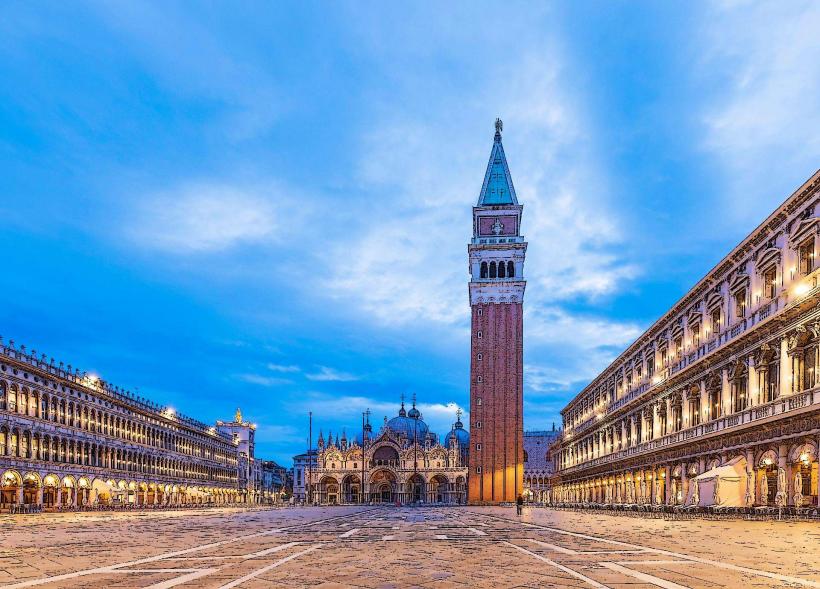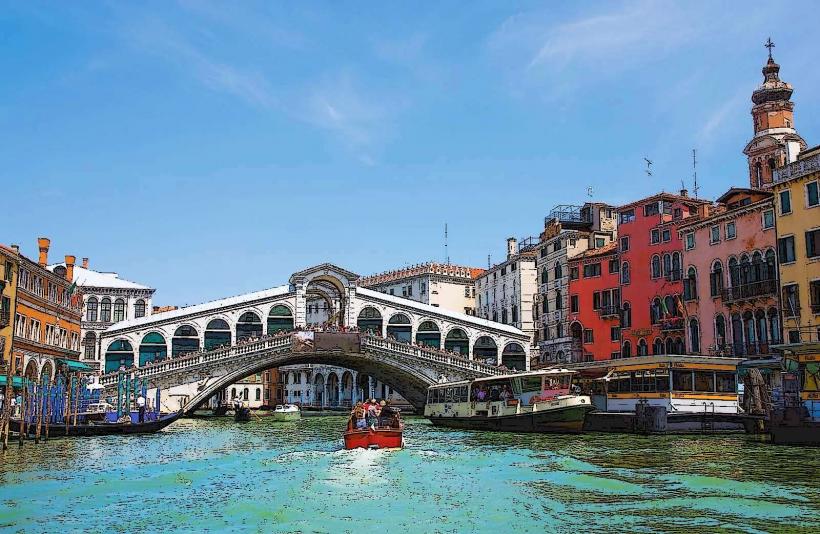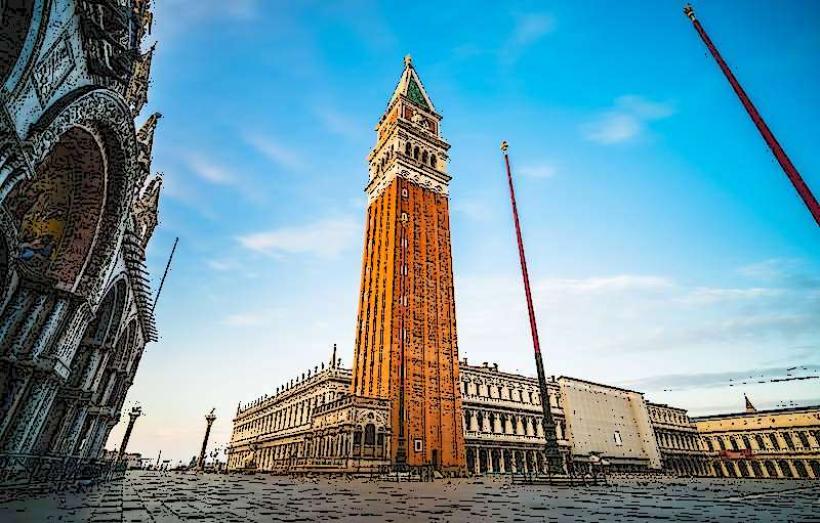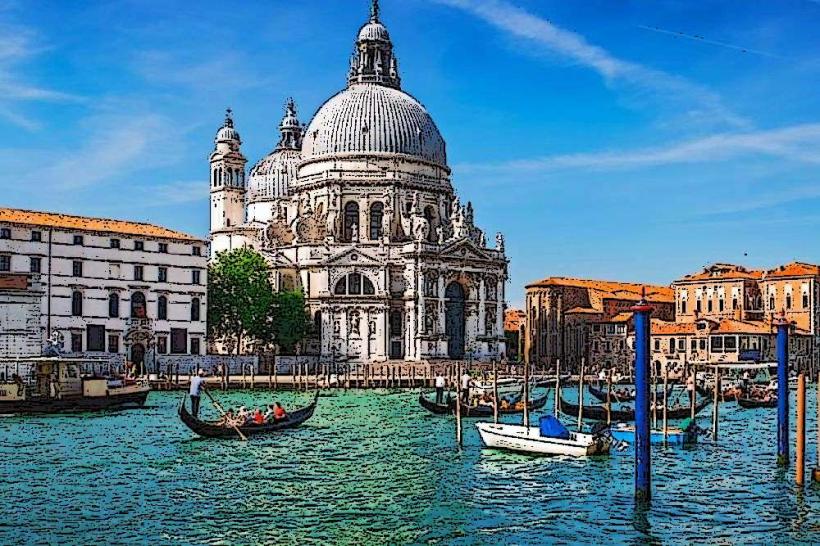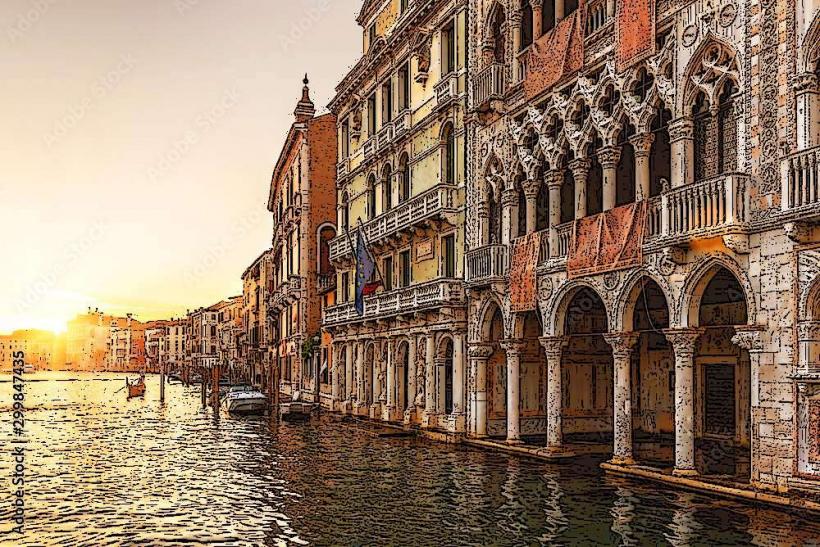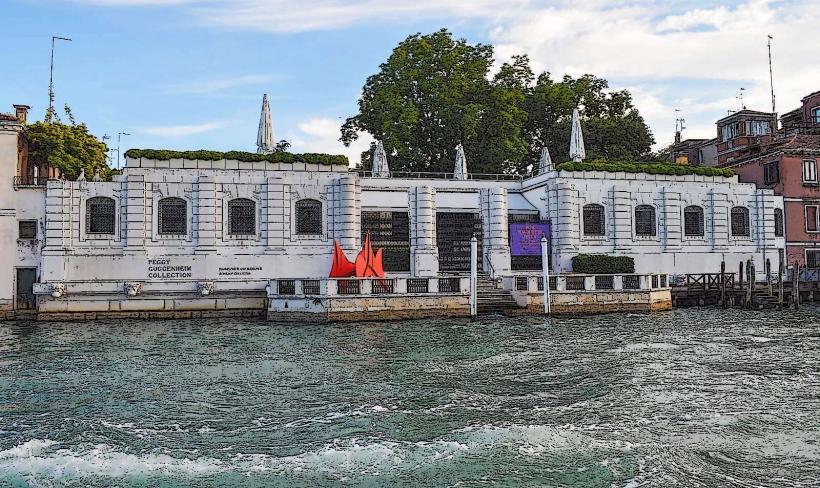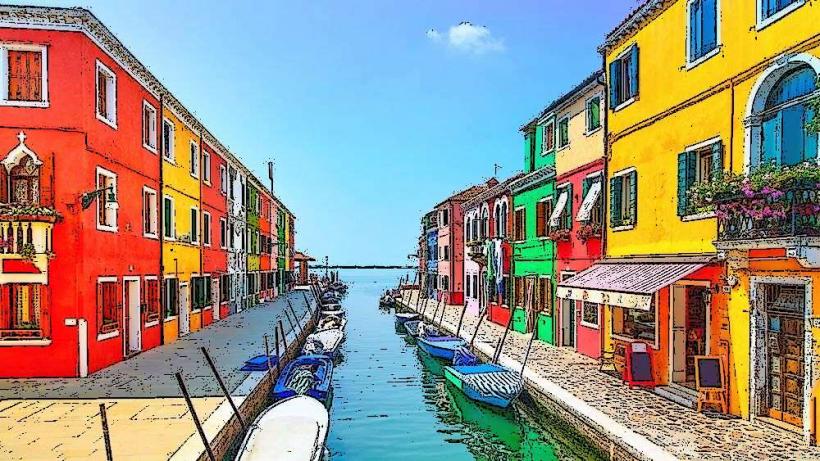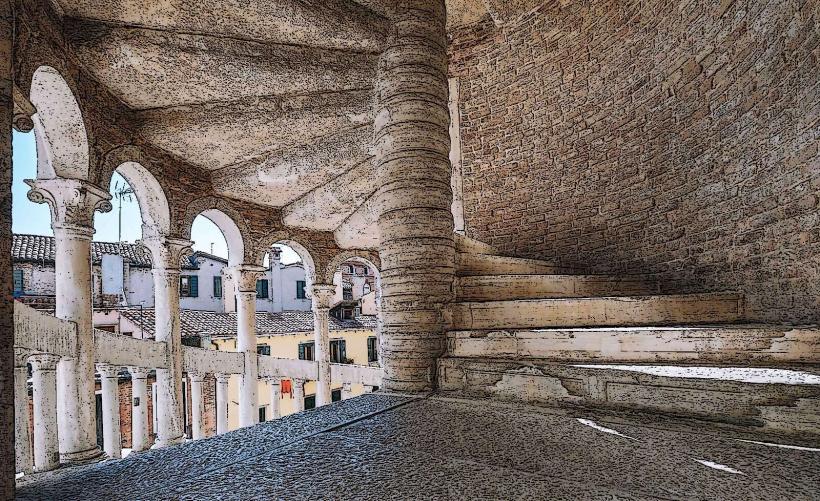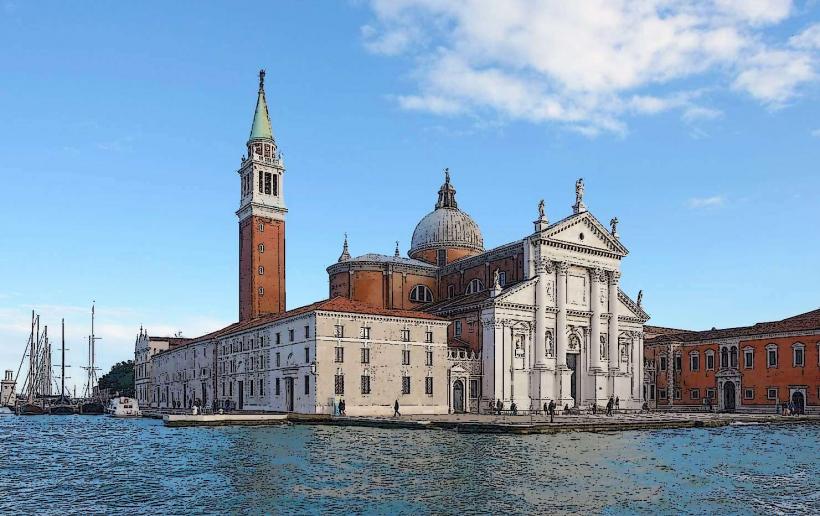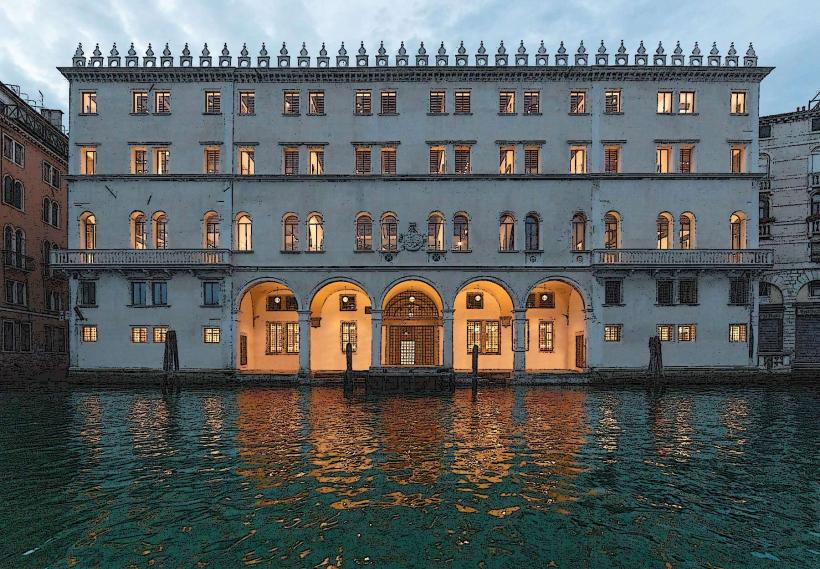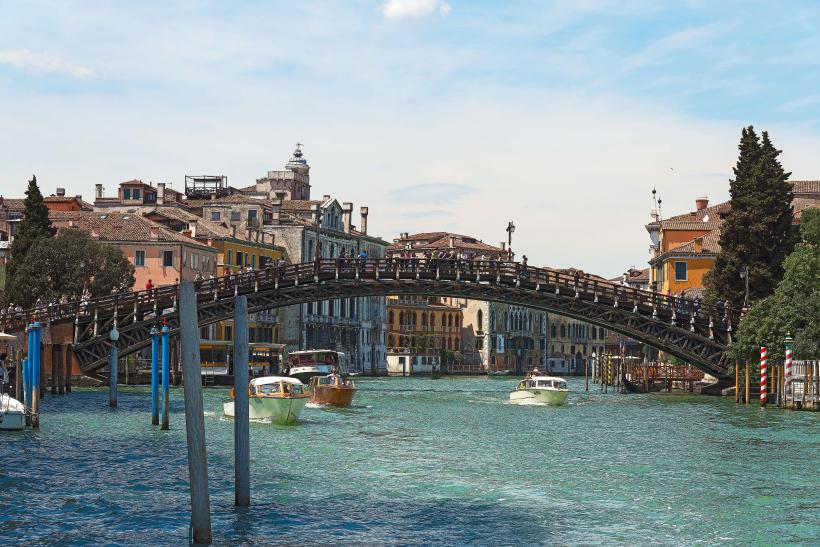Information
Landmark: Ponte dei SospiriCity: Venice
Country: Italy
Continent: Europe
The Bridge of Sighs (Ponte dei Sospiri) is one of the most famous and picturesque landmarks in Venice, known for its romantic and somewhat melancholic history. This iconic white limestone bridge connects two important buildings: the Doge’s Palace (Palazzo Ducale) and the Prison of St. Mark (Piombi). It spans the Rio di Palazzo, a narrow canal that runs between these two structures.
1. History and Name
- Construction and Purpose: The Bridge of Sighs was built in 1600, designed by the architect Antonio Contin in the Baroque style. The bridge was constructed to connect the Doge’s Palace, where the Venetian rulers resided, with the Prison of St. Mark, which held prisoners who had been convicted or were awaiting trial.
- The Name: The name “Bridge of Sighs” was coined later, in the 19th century, likely by the British poet Lord Byron. It is said that prisoners, after being convicted and led from the Doge’s Palace to their cells in the prison, would sigh as they crossed the bridge, gazing out through the small windows at the view of the outside world—symbolizing their last glimpse of freedom before imprisonment. While there’s little historical evidence to support the dramatic romantic notion of the sighs, the name has endured.
2. Architecture
- Design: The bridge is made of white limestone and has a simple but elegant design, with a distinctive arched roof. The architecture contrasts with the more elaborate and ornate structures surrounding it. The bridge is a covered structure, and the interior is quite narrow with small, arched windows on each side, allowing only a limited view of the outside.
- Windows: The bridge’s windows are one of its most recognized features. They are small, grilled openings that provide a limited view of the outside world. These windows once allowed prisoners a final view of the Grand Canal and the beautiful city of Venice before being confined to their cells.
- Materials: The use of white limestone gives the bridge a striking, almost ethereal appearance. Over time, however, the stone has been weathered, and parts of the bridge have developed a subtle patina.
3. Location and Structure
- The Bridge of Sighs connects the Doge’s Palace, which was the seat of the Venetian government, with the Prison of St. Mark. The Doge’s Palace is a Gothic-style building that housed the Doge (the ruler of Venice) and the council. The bridge passes over the Rio di Palazzo, a narrow canal that separates the two buildings. The bridge’s strategic location was designed to prevent prisoners from being paraded through public areas and to maintain their secrecy during their transportation.
4. Symbolism and Significance
- The Bridge of Sighs has come to symbolize the mystery and intrigue of Venetian justice, as well as the contrast between the public grandeur of the Doge’s Palace and the hidden suffering of those imprisoned. It reflects the Venetian Republic’s strict system of governance and its methods of dealing with prisoners.
- Poetic Imagery: The idea that prisoners sighed as they crossed the bridge, overwhelmed with despair at their fate, has inspired countless poems, songs, and literary references, reinforcing the bridge’s place in the popular imagination. Lord Byron famously wrote:
“I stood in Venice on the Bridge of Sighs,
A palace and a prison on each hand.”
5. Cultural and Artistic Influence
- The Bridge of Sighs has become a popular subject in art, literature, and romanticized narratives about Venice. It is often depicted in paintings, photographs, and films, highlighting its symbolic beauty and mystery.
- Venetian Tourism: The Bridge of Sighs is one of the key tourist attractions in Venice, often visited by those exploring the Doge’s Palace and the historic center. Visitors can view the bridge from both the inside (while touring the Doge’s Palace) and from the outside, from the nearby Ponte della Paglia bridge, which offers a classic view of the bridge spanning the canal.
6. Function
- The bridge was originally built to provide a secure and discreet passage for prisoners being moved between the Doge’s Palace, where they were judged, and the prison, where they would be held. At the time, Venice was known for its secretive political and judicial system, and the bridge provided a means to avoid public exposure for those accused of crimes.
- The Prison of St. Mark (which the bridge connects to) was an improvised prison built in the roofs of the Doge’s Palace. It consisted of small, dark cells where prisoners were often confined in harsh conditions. The bridge thus plays a key role in connecting the places of Venetian governance with its hidden, often cruel, judicial system.
7. Tourism and Viewing the Bridge
- Accessing the Bridge: While the Bridge of Sighs is part of the Doge's Palace complex, it can also be viewed from outside, from the Ponte della Paglia (a bridge near the Riva degli Schiavoni) that runs along the canal. The bridge is visible from this location and provides the classic photo opportunity.
- Inside the Doge’s Palace: Visitors touring the Doge’s Palace can walk across the Bridge of Sighs themselves, getting a sense of the space and imagining what it might have been like for those passing through it centuries ago. Visitors can also view the prison cells and explore the areas where prisoners were held, giving additional context to the bridge's historical significance.
8. Bridge of Sighs Today
- Today, the Bridge of Sighs is a key part of Venice's cultural heritage and tourism. The romantic and mysterious atmosphere of the bridge makes it a must-see for visitors to the city. The bridge has retained its symbolic status as a place of transition, representing both the tragic fate of those condemned and the serenity of Venice’s timeless beauty.
- The bridge's role as a tourist attraction has also made it one of the most recognized symbols of Venice globally, often representing the city in photographs and artistic works.
9. Legend and Romantic Notion
- The romantic legend associated with the Bridge of Sighs has been widely embraced by tourists and lovers alike. It is often said that couples who kiss under the bridge at sunset will be granted eternal love. Though this is a more recent addition to the bridge’s lore, it has become a part of the romantic appeal of the location.
- Venetian Myth: According to one popular myth, if lovers kiss on a gondola under the Bridge of Sighs at sunset, they will have eternal love and happiness, adding a layer of romantic mystique to the landmark.
10. Conclusion
The Bridge of Sighs is not only a bridge in Venice, but a symbol of the city’s history, romance, and mystique. Its connection between the Doge’s Palace and the prison embodies the hidden and mysterious elements of Venetian politics and justice. Today, it stands as a testament to the city’s rich cultural heritage, evoking feelings of nostalgia, romance, and intrigue. Whether appreciated for its architectural elegance, its evocative name, or its role in the city’s historical narrative, the Bridge of Sighs remains one of Venice’s most iconic and enduring landmarks.

